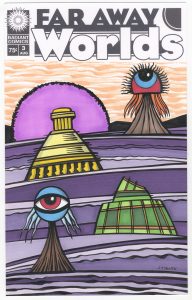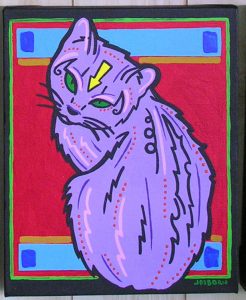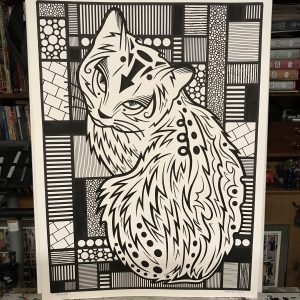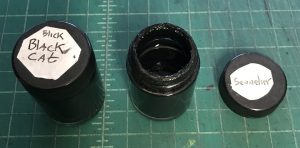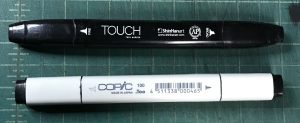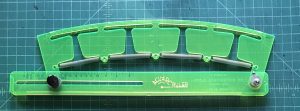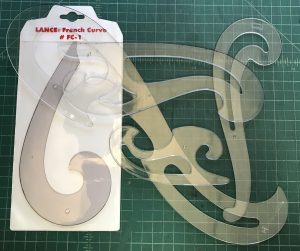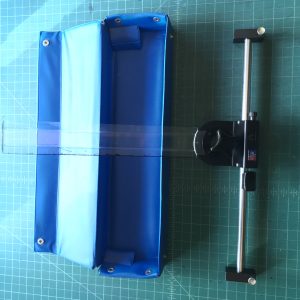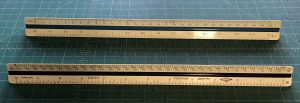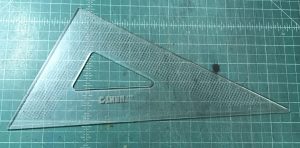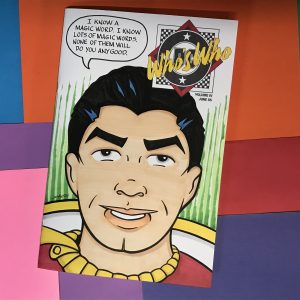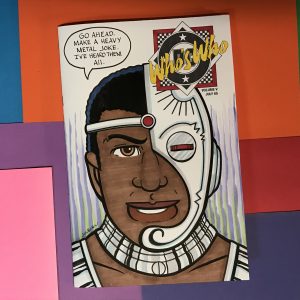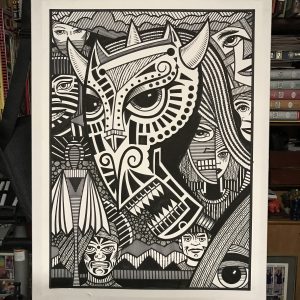I’m moved tonight to write about my trips to the comic book store. Or stores as the case may be. It’s one of those everyday (or every week) things that slip away unnoticed with time. In the mid-1970s before the age of the comic shop I used to go to local stores that had newsstands to buy my comic books. At first it was the 7-11 behind my house. They had a spinner rack and they got new comics in every week. They’d put the new ones on the stand every Thursday afternoon and I’d be there to check them out and buy the ones I wanted.
As the 1970s wore on comics on the newsstand were starting to die. Newsstands didn’t want to bother with the low price and low profit comic books. They’d rather sell higher priced magazines. My local 7-11 started to not care so much about the comics and it showed. They got fewer of them in and put them out in an inconsistent manner. I also think they changed owners. About that time I was lucky to find another store called Stout Steve’s that was a bike ride away and took more care with their comics. That became my regular place for comics on Thursdays for a few years. I can remember putting the bag of comics under my shirt and then tucking my shirt into my pants to be able to ride my bike without having to hold the comics in my hand. Messenger bags were a long way off.
In the summer of 1981 I turned fifteen and a comic shop opened in a town about ten miles away. That was as cool as it gets. Of course being ten miles away meant that I couldn’t get there without a ride. So I visited it every so often but still continued my trips to Stout Steve’s every week. My friend Steve and I did bike ride the ten miles to the comic shop one summer day. That was the only time I made it there under my own power.
My friend Rob (who I met in high school) and I both turned 16 the next year. We both got our driver’s licenses but I don’t think it was until the next year (1983) when we were 17 that Rob got access to the family car on a regular basis. That’s when we started going to the comic shop on a regular basis. Saturday mornings he’d drive over to my house to pick me up and we’d travel the ten miles to Nyack NY and M&M Comics.
That is also when I found out about having a “Pull list.” If you wanted to buy a certain comic you’d tell the store ahead of time and they’d pull it for you and put it aside for when you came in. Comic books are usually published monthly or every two months so I could just put the X-Men on my pull list and it would be at the comic shop waiting for me every month. That way I wouldn’t miss an issue.
As time went on besides M&M Comics we started to add a couple of other stores to our itinerary. We would head over to the local mall and check out the record store and book store. After a couple of more years we added video game stores to that list.
In about 1984 a second comic shop opened in that mall. It was once a used bookstore called The Paperback Exchange that we would check out every now and then but we noticed it started to add comics. Then slowly the books disappeared and the comics took over. I still kept my pull list at M&M Comics but would buy a book or two at the Paperback Exchange.
In 1984 Rob and I both graduated form high school and went off to college. No longer could we make it to the comic shop weekly but we still had our pull lists there. Whenever we were both back home for the weekend we’d meet up and go to the comic shop and our other stores.
My first college was up at what is now SUNY Sullivan in the Catskills. It was a two year school and there were no comic shops anywhere around. My second school was SUNY Purchase in Westchester NY. Nearby was the White Plains Galleria and in that mall was a comic shop named “Hero’s World.” I made a bunch of new friends at Purchase and some of them were comic books fans so we made occasional trips to Hero’s World. It was always fun to get off campus and go get some comics. Not my pull list stuff but whatever caught my fancy.
About a year after I graduated from college I found myself working at Marvel Comics. Suddenly there were comics around me everywhere all of the time. I could pretty much get any Marvel or DC comic that I wanted for free. The funny thing was that by that time I wasn’t really reading any Marvel or DC comics. I was pretty much an indie comics guy.
My tastes had always run to the weirder less mainstream comics even when I was a kid buying comics off the newsstand. I especially like all the strange offbeat comics that Marvel published in the late 1970s. After M&M Comics opened in 1981 I was introduced to indie and small press comics. Stuff that couldn’t be found on the newsstands and only was distributed to comic shops. So even though I was surrounded by comics at Marvel I still would go to the comic shop.
Rob had moved back into town after he graduated college and so we resumed our trips to the comic shop. It wasn’t every week as I was often away on Saturdays, staying in the city with friends for the work week, or had a long commute that left no time after the work day but we usually made it every two to three weeks at the longest.
The the first half of the 1990s was a boom time for comic books. A couple of new comic book stores opened up in the county and though we weren’t regulars at them we’d check them them out every now and again. It was also a boom time for video games so there were two or three video game stores in the Nanuet Mall alone. That could really kill a Saturday morning. It was a different world in 1993.
In December of 1998 M&M Comics closed it’s doors for good. I had a pull list there for fifteen years. The Paperback Exchange was now called The Comics Warehouse and I moved my pull list over to there. Things went on that way for a while until some time in the early 2000s (I can’t even remember when) Rob moved out of town and over the border into New Jersey. That’s when we started to meet up at the comic shop rather than drive over together. Most of the bookstores, music stores, and video game stores on our mall run were closed by then so it wasn’t even a bother to cut them out. We had the internet for that.
In 2005 I stopped commuting into NYC. That meant I could get to the comic shop on a week night. New comic book day is on Wednesday but Rob and I usually don’t go until Thursday. That’s not set in stone or anything but it’s the general plan.
I’m not sure of the date but sometime around 2008 Comics Warehouse moved from it’s location near the Nanuet Mall into downtown Pearl River. So now, baring a text changing the plans, Rob and I meet at the comic shop in Pearl River at about 5 PM on Thursday nights. We hang out until it closes at about 6PM talking comics, movies, books, life, and whatever else comes up. John is the name of the guy who works that night and he always joins in. So do Roy and Dave if we go on a day when they’re working. Plus we chat with whatever regulars show up at the shop. It’s a grand old time. I was just there this evening.
